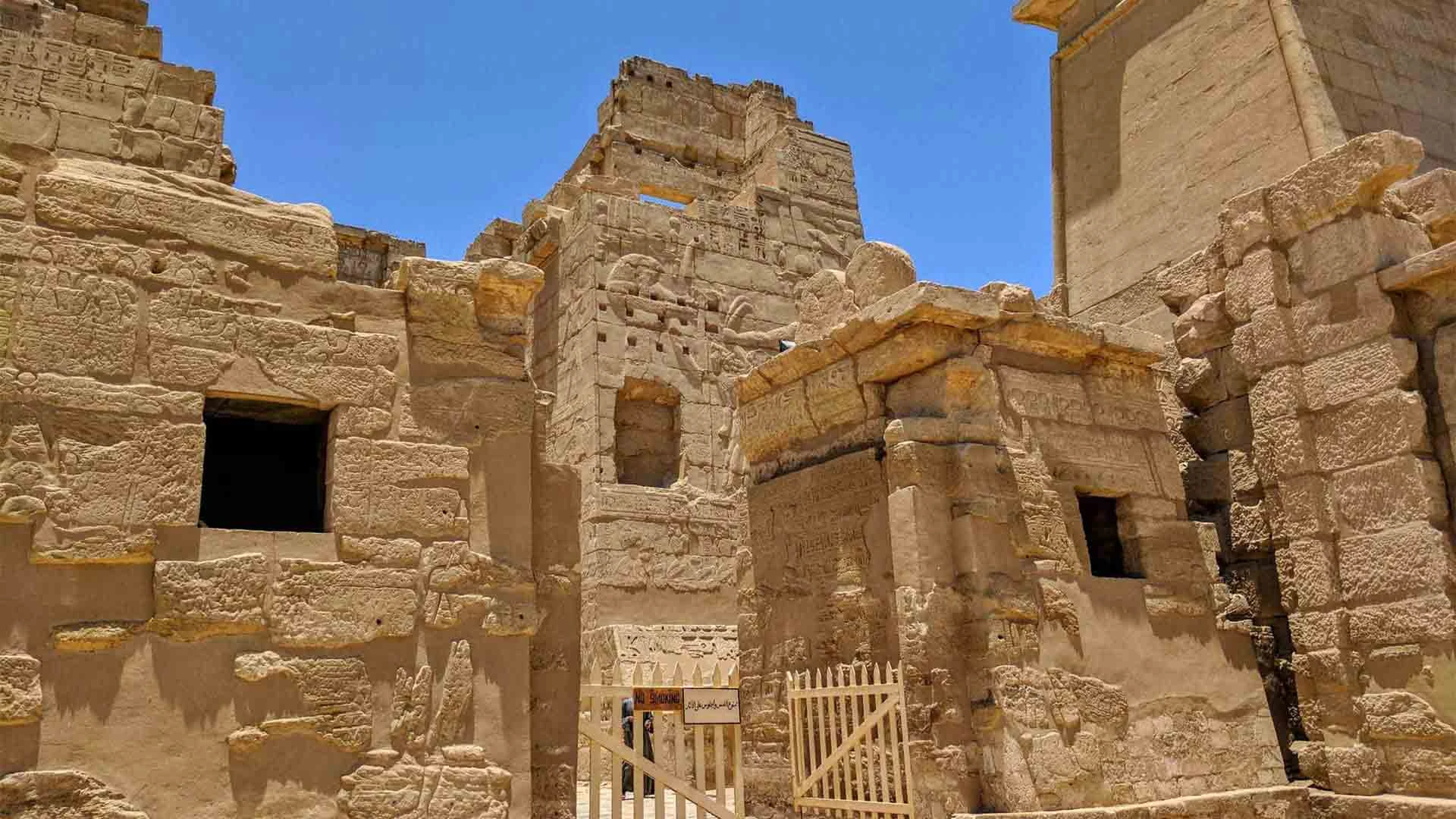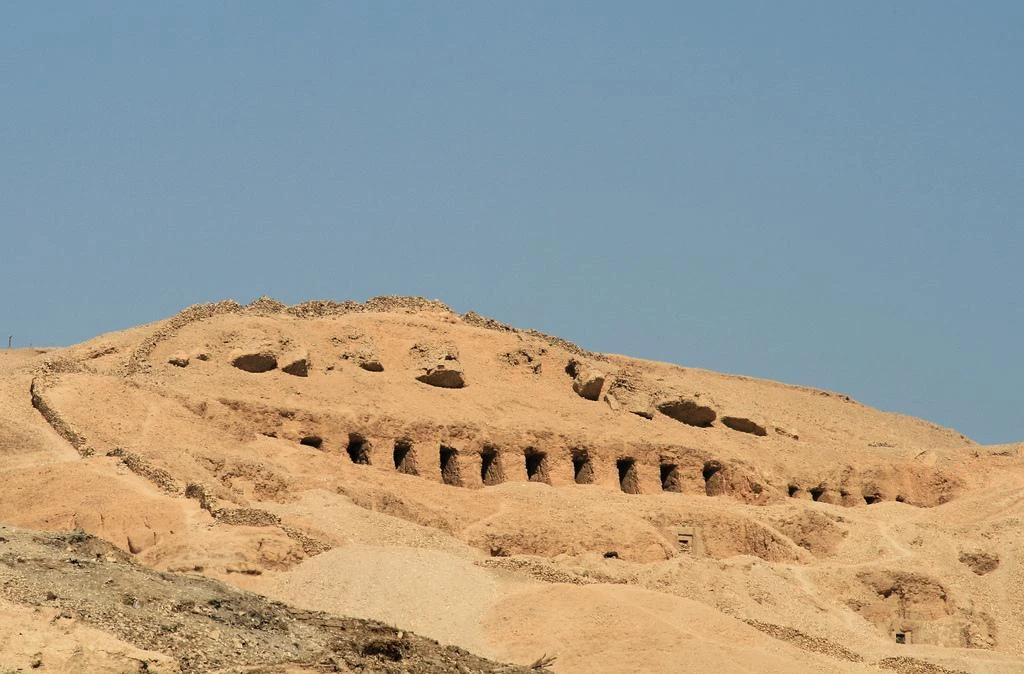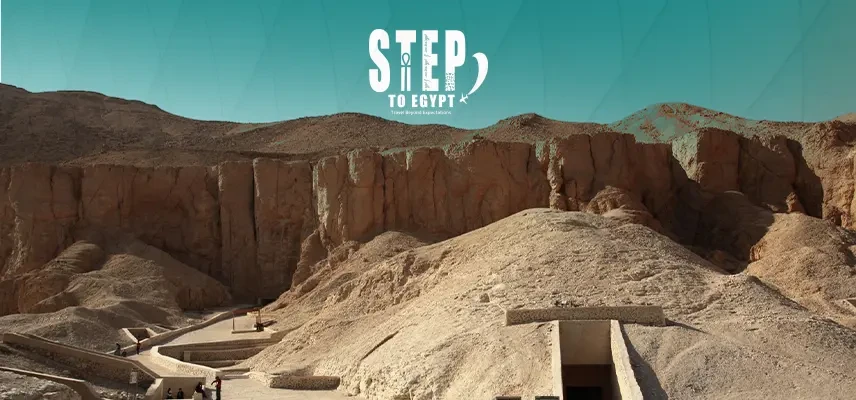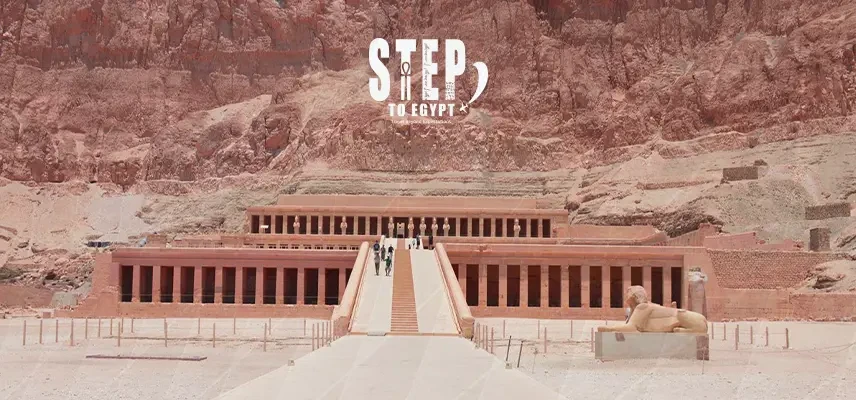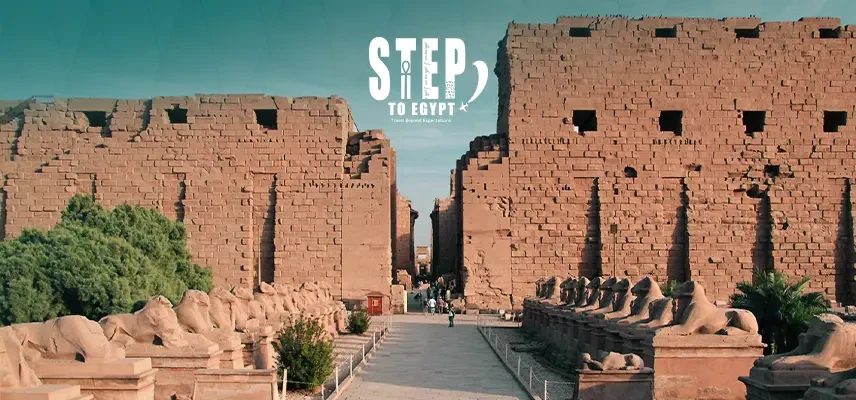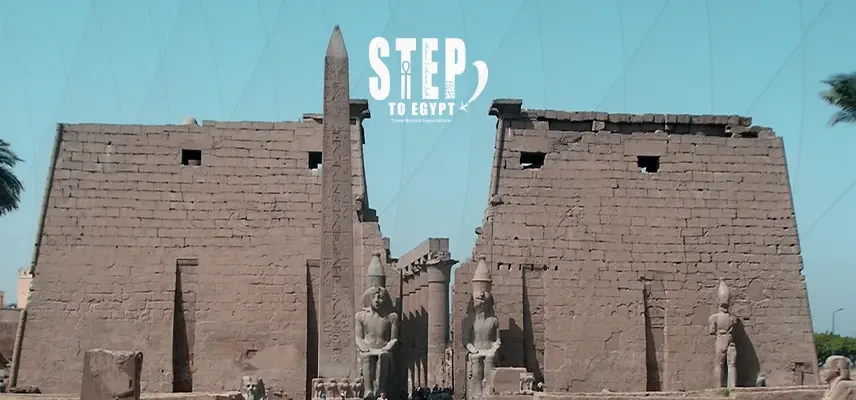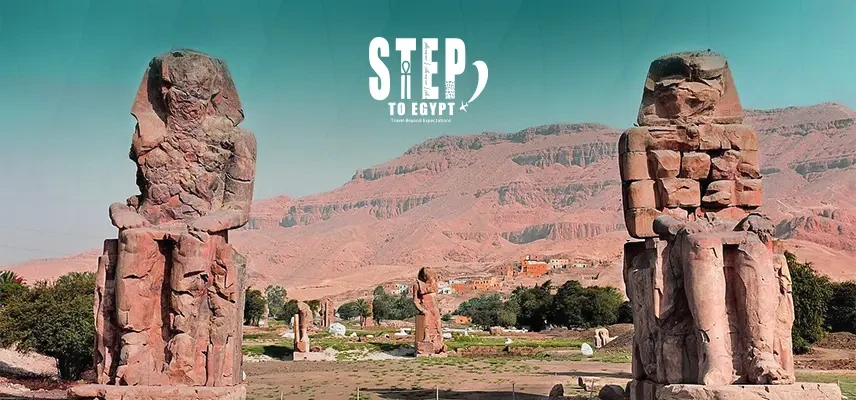
The Colossi of Memnon are two giant stone statues of Pharaoh Amenhotep III, each one stands about 18 meters high (nearly 60 feet) and weighs over 720 tons. You will find them sitting side-by-side facing the sunrise over the Nile River. The two giant statues are carved from solid blocks of sandstone and even though they have been standing for more than 3,000 years, they still look pretty iconic. These statues are located on the west bank of the Nile just across the river from Luxor.
Are you planning on visiting the Colossi of Memnon? Then get ready to sightseeing one of ancient Egypt's most iconic mysteries especially if you’re one of those who are into sunrise photography and old-school mythology. This is, no wonder, a highlight in many Egypt tours.

What is the Colossi of Memnon?
The Colossi of Memnon are two giant stone statues of Pharaoh Amenhotep III, each one stands about 18 meters high (nearly 60 feet) and weighs over 720 tons. You’ll find them sitting side-by-side facing the sunrise over the Nile River. The two giant statues are carved from solid blocks of sandstone and even though they’ve been standing for more than 3,000 years, they still look pretty iconic.
The statues show the pharaoh seated on his throne, with carvings of his wife, mother and the god Hapy around him. They were originally placed at the entrance of a massive mortuary temple that once stood behind them but that temple has sadly vanished by time.
In all of our stunning Egypt budget tours, we make sure you enjoy every minute in this place.

Where is the Colossi of Memnon Located?
These statues are located on the west bank of the Nile in the Theban Necropolis just across the river from Luxor day tours. You will be able to spot them on the road leading to other famous west bank sites like the Valley of the Kings. Colossi of Memnon statues are part of one of Egypt’s most epic burial grounds surrounded by ancient tombs and ruined temples.
What is REALLY mind-blowing is that the stone used for these statues came from El Gabal el Ahmar near modern Cairo and was moved about 420 miles all the way to Thebes (now Luxor) back when there were no trucks or cranes!
Make your visit to the Colossi even more unforgettable by pairing it with a peaceful journey aboard our Dahabiya Nile Cruises.

When Was the Colossi of Memnon Built?
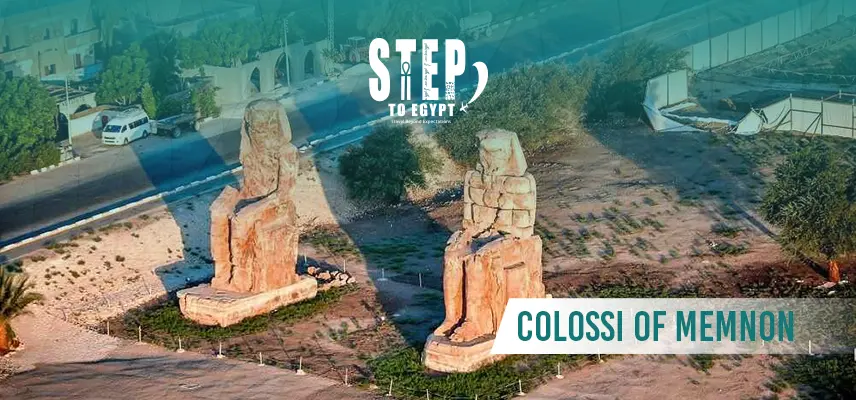
The Colossi of Memnon were built during the 18th Dynasty around 1350 BCE when Pharaoh Amenhotep III ruled Egypt. And this period in history was part of the New Kingdom that is often seen as ancient Egypt’s golden age. This time was known for incredible architectural achievements and temple constructions.
The statues were commissioned as part of Amenhotep III’s grand mortuary complex built to celebrate his reign, and also to ensure he would be honored and remembered in the afterlife.
They have been standing for over 3000 years surviving countless earthquakes, floods and invasions. If you're looking into the best historical landmarks to visit in Luxor, this one is definitely high on the list and it is included in many Egypt day tours and even longer Luxor and Aswan Nile cruises that explore Egypt’s ancient wonders.

What Was the Colossi of Memnon Used For?
These statues were not only located for show, but also they stood guard at the entrance of Amenhotep III’s mortuary temple. Back then he was seen as a living god and this temple was built for people to worship him even after his death. Even though the temple was mostly destroyed by earthquakes and flooding, the Colossi stayed standing and became a symbol of eternal protection.
It should be in your itinerary in Luxor day tours.

What Is the Mortuary Complex of Amenhotep III?
The mortuary complex was huge to the extent that it is bigger than even the Temple of Karnak! It was covering about 86 acres and it had courtyards, halls and tons of columns. The whole place was designed to honor the king in the afterlife and link him with the gods, especially Osiris.
Today, most of it is gone but the good news is archaeologists have found pieces and foundations that show just how massive it really was. The Colossi of Memnon are the only parts still standing above ground that you will visit during Egypt family tours.

What Is the Meaning Behind the Name “Colossi of Memnon”?
Here you should know that the name "Memnon" doesn’t actually come from Egypt! But from Greek mythology as the Greek travelers mistook the statues for Memnon (a hero from the Trojan War who was said to be the son of the goddess of dawn).
And because the statues used to make a strange sound at sunrise, the Greeks thought it was Memnon calling to his mother, and that is how they got the name Colossi of Memnon, and the whole area was even called the Memnonium.

What Is the Legend of the “Vocal Memnon”?
Here’s where it gets weird.. an earthquake happened in 27 BCE, and after that the northern statue cracked and started to make a sound at dawn like a whistle or hum.
Ancient writers like Strabo and Pliny the Elder said that people travelled from all over the world to hear it and that the sound was a sign of good luck and you can come with Egypt classic packages to visit it. But scientists think the noise came from dew inside the cracks evaporating in the morning sun. Until in 199 CE, when Emperor Septimius Severus repaired the statue and the sound stopped, and it has not made a peep ever since.

What Are the Architectural and Symbolic Features of the Colossi of Memnon?
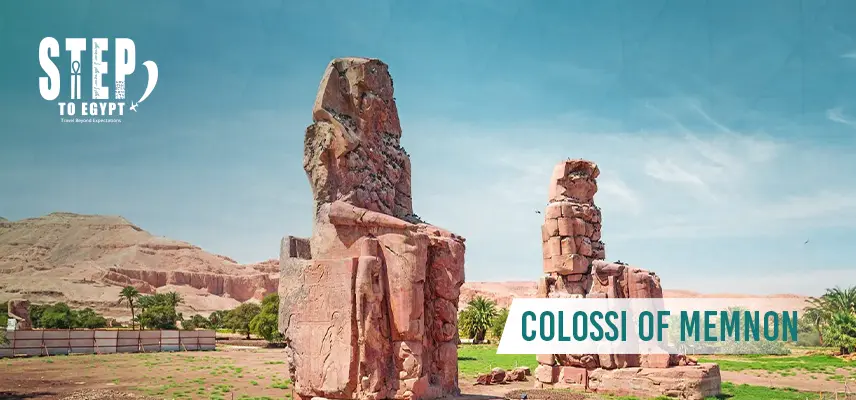
The statues show Amenhotep III sitting on a throne and his hands on his knees and he’s facing east toward the Nile and sunrise. He is wearing the Nemes headdress (the striped cloth crown) and the uraeus cobra that are both symbols of royal power.
Smaller figures of his wife Queen Tiye and his mother Mutemwiya are carved beside his legs. And on the base there are carvings of the god Hapy which stands for life and fertility. The statues were mainly meant to send a message of divine kingship and protection.

Who Was Pharaoh Amenhotep III and What Were His Achievements?
Pharaoh Amenhotep III ruled Egypt from 1386 to 1349 BCE starting at around 12 years old. His reign was peaceful and full of diplomacy, art and architecture instead of war. And he later on married Queen Tiye, one of the strongest royal women in Egyptian history.
During his time he built over 250 monuments, temples and statues, including the Colossi and a massive palace in Malkata.
Amenhotep III helped Egypt reach new heights without ever going to a battle!

What Restoration and Preservation Efforts Have Been Made for the Colossi of Memnon?
The Colossi of Memnon have gone through alot over the centuries (talking about earthquakes, floods, and erosion). One of the Roman emperors, Septimius Severus, was the first to try repairing one of the statues in the year 199 CE.
And in recent years, archaeologists have led projects to excavate and protect the statues and parts of the temple ruins.
Here to mention that work is still ongoing to keep the Colossi safe for future generations to see. Get to Egypt luxury packages and check availability!

What Are Some Interesting Facts About the Colossi of Memnon?
Can you count?
- Colossi of Memnon is built around 1350 BCE during the reign of Amenhotep III
- Each statue is about 18 meters tall and weighs over 720 tons
- Colossi of Memnon is carved from sandstone quarried near modern-day Cairo
- They were part of the largest temple complex of its time
- The statues once made "singing" sounds at sunrise
- Greek travelers believed the sound came from the hero Memnon
- Only the statues remain from Amenhotep III's mortuary temple
- It is a popular stop on most Luxor day tours, Egypt family tours and Egypt travel packages
- Must-see spot for anyone chasing sunrise at Colossi of Memnon
Now, are you ready to See the Colossi in Real Life?
Let’s agree that visiting the Colossi of Memnon is one of those experiences that you will never forget. It is one of those spots that hits different when you see it in person. So why just scroll when you can see it up too close? Check out the Colossi of Memnon tour Luxor options and book your adventure through Step To Egypt. And let history blow your mind for real!
About The Author: STE Team

